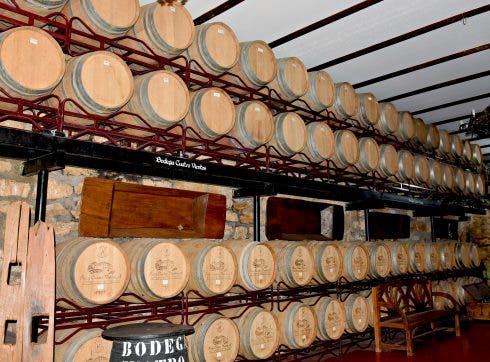WHEN I first visited the Alpujarra in the early 2000s, I was immediately offered a glass of ‘costavin’ (local wine). Rose-coloured and sweet, strong yet natural, it was a pleasant change from the Chardonnay we drank in Brighton.
During a second visit, my group booked a farmhouse near Almegíjar, a 40min drive from Órgiva. To our surprise, it was shared with the Spanish host family. Out came the ‘abuelo’ (grandad) with a five-litre bottle of costa to offer his guests. He trustingly left us in charge of the precious gift.
Unaware of its strength, and being typical Brits abroad, we swigged it down quickly. The abuelo returned to reclaim the remaining wine – only to find an empty bottle, and everyone asleep in the midday sun.
Since then, I have a long history of enjoying the local vinos, which are typically grown in Granada, Lecrin, the Alpujarra and the Contraviesa.
Most of these varieties are extremely palatable. In recognition, Granada wine producers have their own quality seal – the ‘D.O Vinos de Calidad de Granada’.
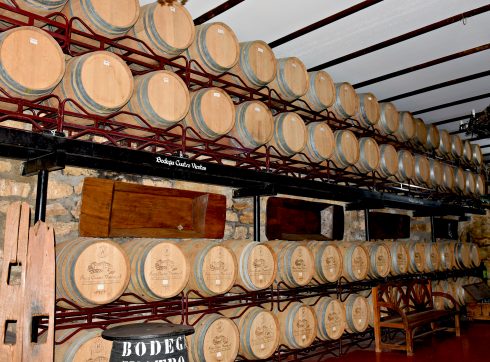
A delicious wine with few chemicals
Although visitors can easily underestimate the strength of the local vinos, they contain fewer chemicals than store-bought wines, and some types are ecological.
Javier, a bar proprietor from Cáñar, who bottles 800 litres a year, says that his home-made costa contains 6% sulphites.
Francico García Carrión, proprietor of bar-restaurant-bodega, Haza del Lino, just above Polopos on the Sierra de Contraviesa, uses 5% sulphites. He also avoids raising agents.
This natural approach compares favourably to commercial wines, which contain much higher chemical levels. If you’re sensitive to sulphites, that bottle of ‘tinto’ or cava from the supermarket will cause a headache the next morning. The costa won’t – provided you don’t overindulge.
Where is costa produced?
For 2,000 years, the Contraviesa and Alpujarra has produced wine. Presumably called costa because it’s made within sight of the coast (the Costa del Sol), this vino uses grapes that grow in abundance on the terraced slopes.
Historically, costa has been made by everyone – from individuals in their ‘fincas’ to bodegas nestling amongst the almond farms.
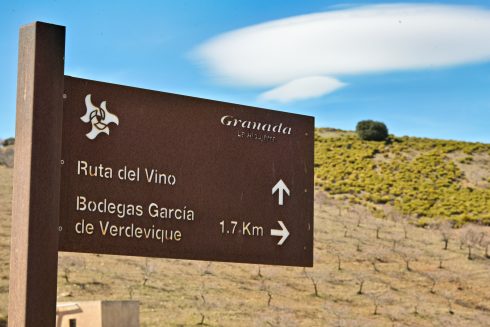
The area has several large, commercial operations, such as the famous Finca Cuatro Vientas in Murtas. Open since 2004, in its current guise, this produces three renowned wine brands – Mallafolla, 4V and Marquis de la Contraviesa. The large and impressive venue has a bodega, museum, restaurant, wine tasting tours, and accommodation. Guests can see antiquities dedicated to wine production, as well as audio visual content.
The Morayama de Alquimia, located near Cadiar, produces 9,000 bottles a year and offers onsite accommodation, in a hotel with a swimming pool.
The Haza del Lino bodega opened in 2014 and is expanding to produce more varieties of its delicious wine. It has a friendly, family feel and provides generous meals.
The Contraviesa – perfect grape-growing terrain
Drive on the unspoilt Contraviesa, and you’ll find signposted ‘Rutas del Vino’ (wine trails). This is the place to learn about how wine is made – or ‘elaborated’, as the Spanish say.
The Contraviesa is ideal for grapes because of its favourable altitude (around 1,200m), latitude, soil conditions and temperature. The ‘little sister’ to the nearby Sierra Nevada, this range doesn’t receive its own water source from snowmelt. Despite the lack of irrigation, grapes, figs, and almonds thrive here.
Thanks to the rocky terrain, the soil traps winter precipitation and accumulates water reserves. Late sprouting of the ‘uvas’ is usually accompanied by spring rain. Even without much irrigation, the crops grow. The clouds that typically form at sunset make the grapes more humid. They are normally harvested from August to October.
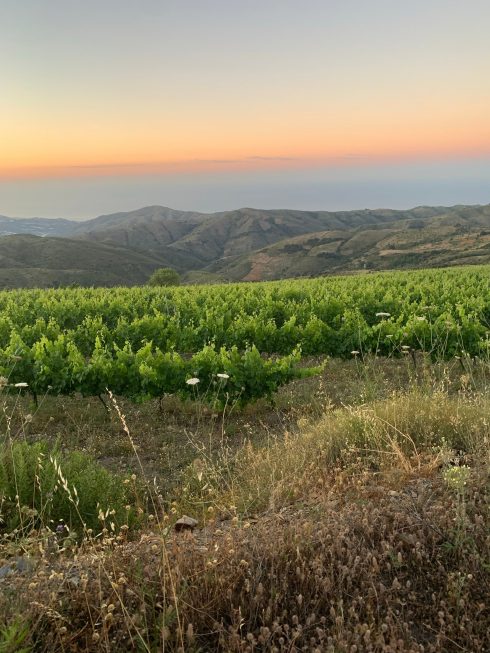
Alicia Fernández Viñolo of Cuatro Vientos says that, on the rolling hillsides, mules still plough the land to grow grapes. In some places, tractors find the steep terrain almost impassable. The old methods prevail to this day, alongside the new.
How is the wine made?
There’s a surprising complexity to wine making. It’s not just a crude process of chucking the ‘uvas’ into a barrel, stamping on them, then leaving them to ferment. It’s necessary to control the conditions and temperature to ensure you don’t make vinegar instead.
A winemaker from Cáñar said to avoid the cellar temperature falling below 11C or rising above 23C, to avoid the vinegar effect.
Commercial producers have tried and tested processes. Even then, they achieve a slightly different taste every year, because the grapes vary.
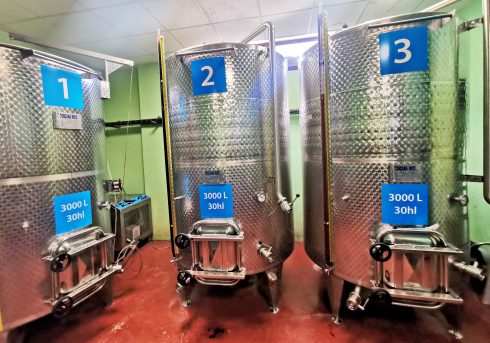
In 2014, Francico García Carrión of Haza del Lino decided to reform his old family winery.
He says: “I decided to improve the quality of our wine, as the grapes from our area have exceptional quality. I renovated the building, where we made wine with my father and grandfather. I built a stainless-steel area, sleeper area, barrels, and niches. This was to make high-quality reds, some young wines and other wines aged with barrels. I kept almost everything my father and grandfather used, to see if it would work. In 2021, we carried out further improvements.”
According to Francico, his fermentation process occurs over six days. First, the red is extracted, then the white, then the rose. The Crianza is kept in wooden barrels, the rest in aluminium.
For wine to be labelled as a Crianza, it must be aged for two years, with a minimum of one year in an oak barrel and another year in the bottle before it’s sold.
What’s up with white?
Surprisingly, white wine produced in the Alpujarra is hard to find – because of a lack of demand, say the locals. Traditionally, red and rose varieties have been the strong preference.
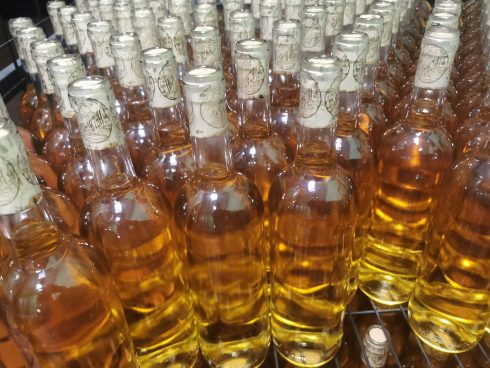
Fortunately, both Cuatro Vientos and Haza del Lino produce good whites, with their in-house labels. The Haza del Lino white proved fruity, dry and delicious.
“White and sparkling wines are increasingly in demand in the area,” says Francico García Carrión.
Whatever vino proves your favourite, you won’t want to miss the ‘wine route’ and bodega tours during your next visit ‘South of Granada’.
READ MORE

